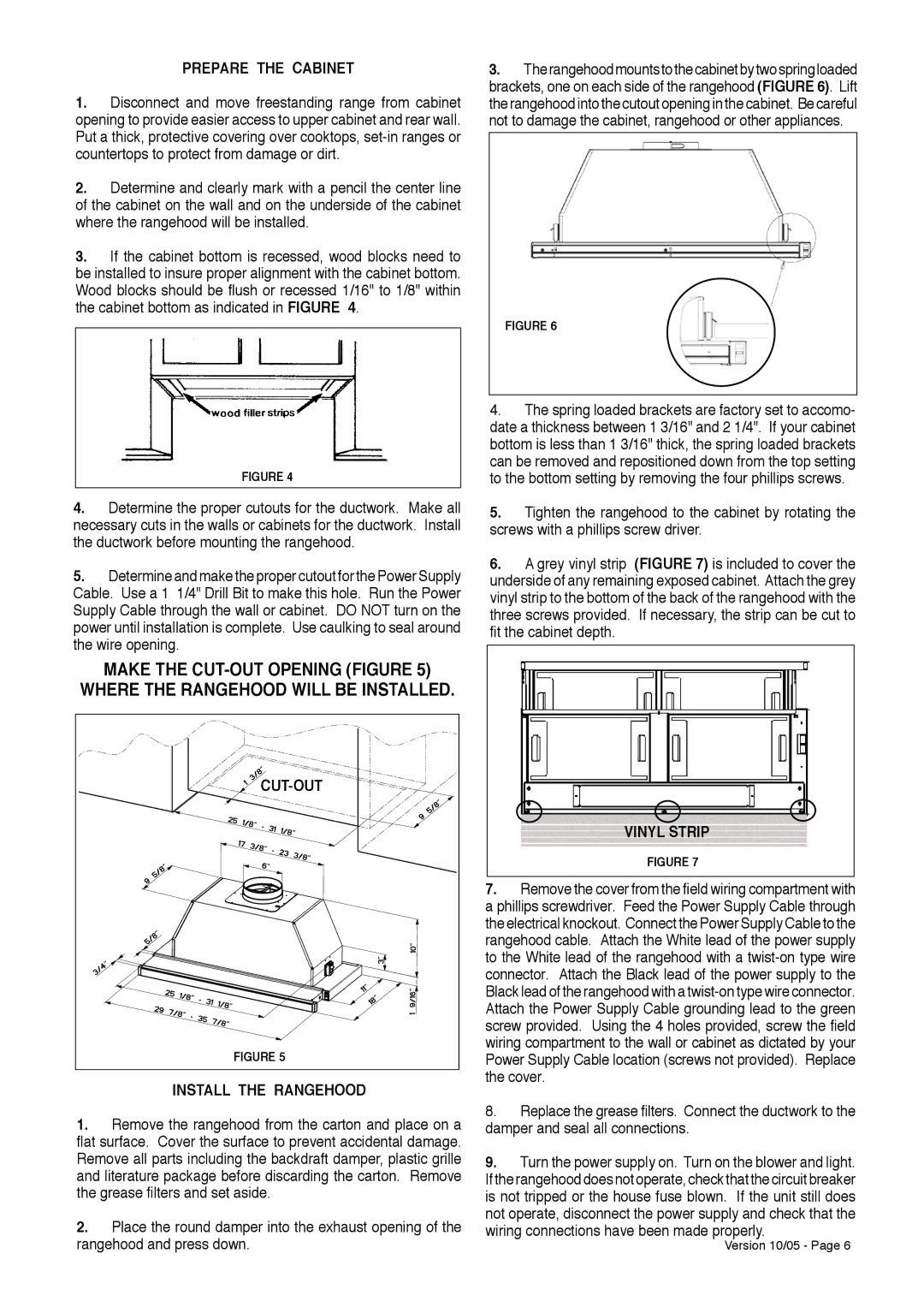
PREPARE THE CABINET
1.Disconnect and move freestanding range from cabinet opening to provide easier access to upper cabinet and rear wall. Put a thick, protective covering over cooktops,
2.Determine and clearly mark with a pencil the center line of the cabinet on the wall and on the underside of the cabinet where the rangehood will be installed.
3.If the cabinet bottom is recessed, wood blocks need to be installed to insure proper alignment with the cabinet bottom. Wood blocks should be flush or recessed 1/16" to 1/8" within the cabinet bottom as indicated in FIGURE 4.
FIGURE 4
4.Determine the proper cutouts for the ductwork. Make all necessary cuts in the walls or cabinets for the ductwork. Install the ductwork before mounting the rangehood.
5.Determine and make the proper cutout for the Power Supply Cable. Use a 1 1/4" Drill Bit to make this hole. Run the Power Supply Cable through the wall or cabinet. DO NOT turn on the power until installation is complete. Use caulking to seal around the wire opening.
MAKE THE
WHERE THE RANGEHOOD WILL BE INSTALLED.
FIGURE 5 |
INSTALL THE RANGEHOOD
1.Remove the rangehood from the carton and place on a flat surface. Cover the surface to prevent accidental damage. Remove all parts including the backdraft damper, plastic grille and literature package before discarding the carton. Remove the grease filters and set aside.
2.Place the round damper into the exhaust opening of the rangehood and press down.
3.Therangehoodmountstothecabinetbytwospringloaded brackets, one on each side of the rangehood (FIGURE 6). Lift the rangehood into the cutout opening in the cabinet. Be careful not to damage the cabinet, rangehood or other appliances.
FIGURE 6
4.The spring loaded brackets are factory set to accomo- date a thickness between 1 3/16" and 2 1/4". If your cabinet bottom is less than 1 3/16" thick, the spring loaded brackets can be removed and repositioned down from the top setting to the bottom setting by removing the four phillips screws.
5.Tighten the rangehood to the cabinet by rotating the screws with a phillips screw driver.
6.A grey vinyl strip (FIGURE 7) is included to cover the underside of any remaining exposed cabinet. Attach the grey vinyl strip to the bottom of the back of the rangehood with the three screws provided. If necessary, the strip can be cut to fit the cabinet depth.
VINYL STRIP
FIGURE 7
7.Remove the cover from the field wiring compartment with a phillips screwdriver. Feed the Power Supply Cable through the electrical knockout. Connect the Power Supply Cable to the rangehood cable. Attach the White lead of the power supply to the White lead of the rangehood with a
8.Replace the grease filters. Connect the ductwork to the damper and seal all connections.
9.Turn the power supply on. Turn on the blower and light. If the rangehood does not operate, check that the circuit breaker is not tripped or the house fuse blown. If the unit still does not operate, disconnect the power supply and check that the wiring connections have been made properly.
Version 10/05 - Page 6
